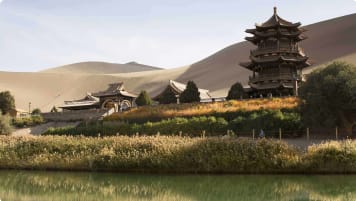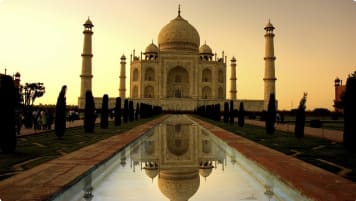India's Mughal Empire
India’s Mughal Empire More than 4 centuries ago the Mughal empire was an immensely successful empire, covering the entire subcontinent of India and reaching a population of 100 million at its peak. It is because…
10 Dec 18 · 9 mins read
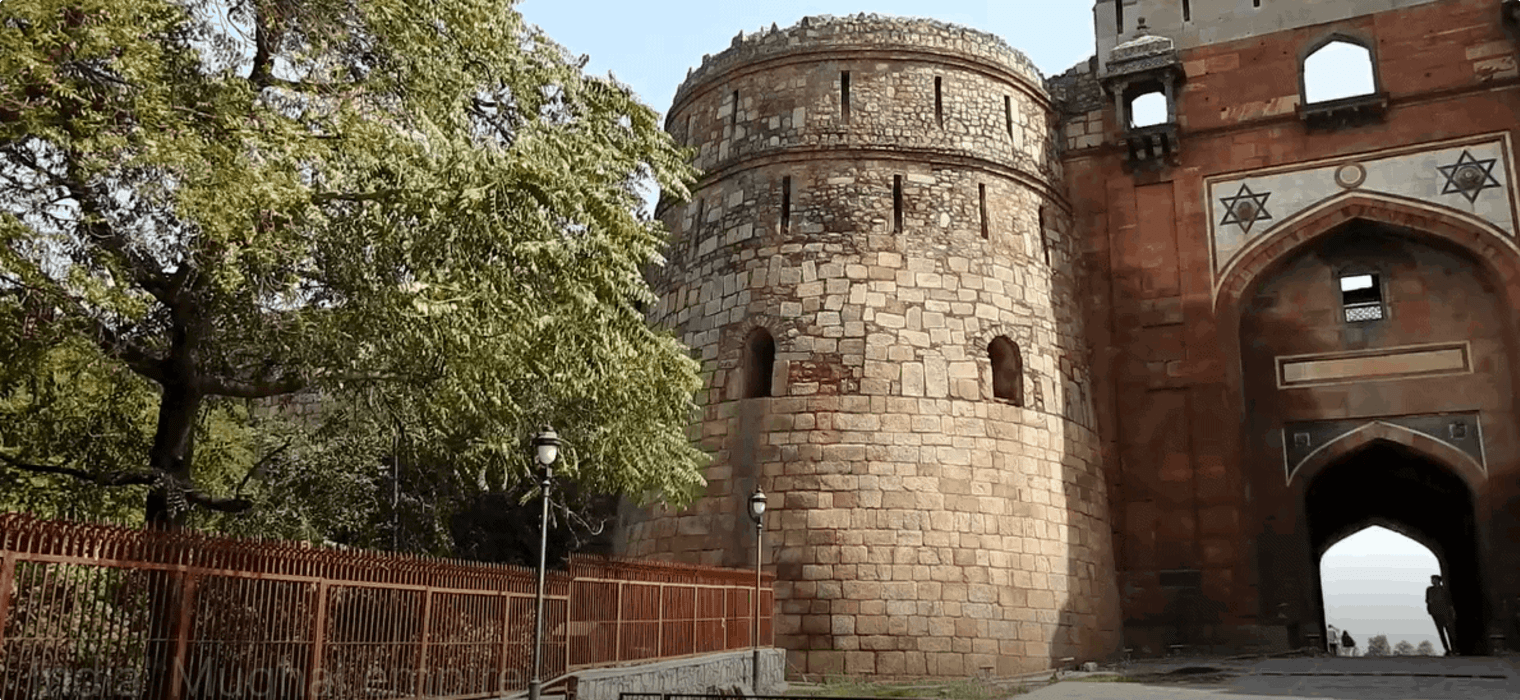
India’s Mughal Empire
More than 4 centuries ago the Mughal empire was an immensely successful empire, covering the entire subcontinent of India and reaching a population of 100 million at its peak.
It is because of the great strides taken by its leaders from Babur to Shah Jahan, and particularly with Akbar the Great, that the name Mughal has been adapted to ‘mogul’, “one who has extraordinary power to direct and control” (Asher 2010). The leadership of Mughal emperors, their overall commitment to religious freedom and peace between ethnicities, as well as their patronage of the arts and architecture, are the reasons that India is the peaceful and beautiful country it is today. India welcomes visitors to embrace the legacy that the Mughals set and revel in the artistry they left behind.
This article introduces you to the rulers who in succession influenced and shaped the Mogul culture that defines India today.
Where the Mughal Empire Began
The origins of the Mughal empire are with a discontented prince who longed to be king. Babur was prince from a long line of rulers linking back to Emperor Timur (from present day Uzbekistan) and Chinggis Khan (Mongol supreme leader). Wanting to live up to the legacy of his ancestors, Babur was unsuccessful at claiming a land to rule a number of times, until he managed to dethrone the Sultan of Delhi in 1526 and become leader of northern India. His success was impressive considering he had a smaller army than the Sultan. He did, however, have a strong arsenal of resources in the form of military horses and artillery.
As the first Mughal emperor, Babur set the tone for his successors to elevate art and architecture. In the short four years of his reign he constructed a large number of “walled gardens with running water courses” (Asher 2010) that later became symbolic of the empire. This style of garden can be seen at the Taj Mahal, one of India’s most famous tourist attractions.
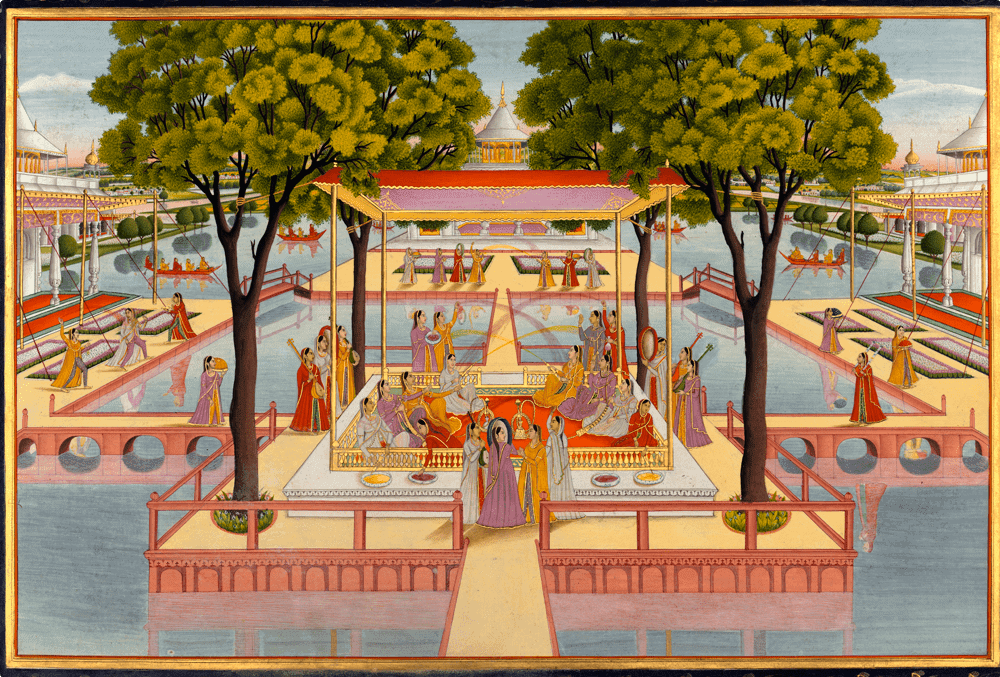
Babur passed away in 1530. There are a number of stories about the circumstances of his death, whether it was by natural causes, poisoning, or from a transfer of illness from his son. In any case, this reign was followed by a decade of rule by his son Humayun. But without the same people or military skills as his father, Humayun was unsuccessful in maintaining leadership and was ousted by warrior Sher Shah Sur in his tenth year of kingship.
The Benefits of Sher Shah Sur’s Rule
Sur’s period of control was deeply beneficial to Mughal society and later Indian society. Firstly, he carried out economic administrative reforms by way of creating a coin system and an algorithm for land distribution in order to facilitate tax collection. He also built a number of roads, houses and wells for the people of his empire, which increased their economy and well-being.
Humayun’s exile was also a benefit in disguise because his time spent in the Safavid kingdom with Shah Tahmasb lead to his cultivation of a network of artists who returned to India with him and established the Mughal empire as a leader of art and culture. Humayun resumed his reign of the Mughal empire in 1555, bringing with him vast artistic inspiration for the Mughal court. But, a grave stair accident led to his death just one year later.

Akbar The Great
At the age of 12, Akbar took up his father’s place as Mughal emperor. However, due to his youth, a noble regent from his father’s court oversaw the administration of the empire. He did so until 1560 when Akbar sent him away on a pilgrimage after concerns of great dislike for the regent across the court. Akbar was mature beyond his years and possessed uncanny strategic and military capabilities despite his youth. He managed to extend his territory continuously throughout his 50 years in power and brought stability to the troubled empire that his father left him. He did this by having a progressive outlook on the structure of the court and incorporated a number of religious and ethnic identities into his court.
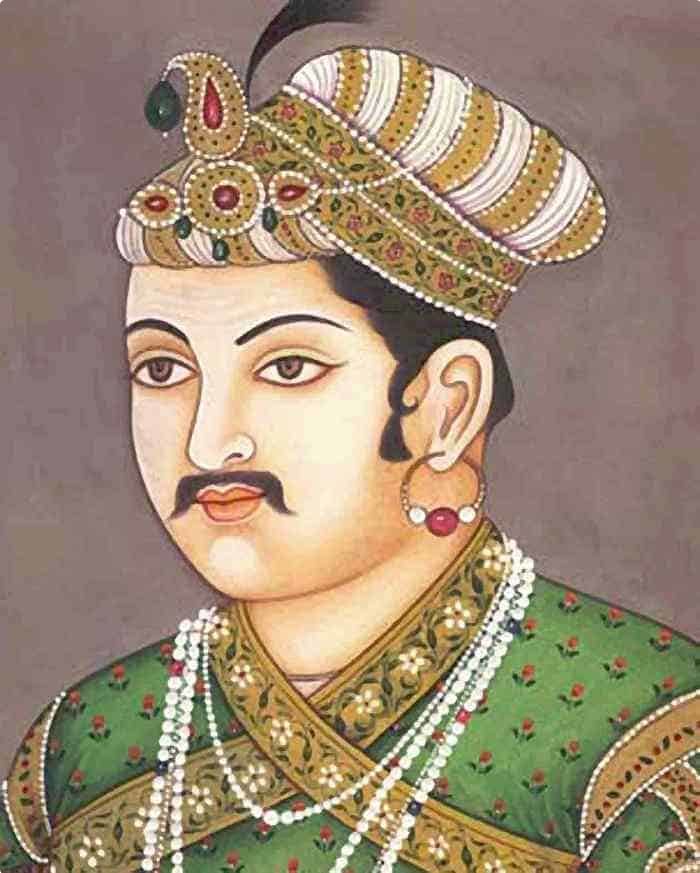
Akbar created alliances with the independent princes of the territories he conquered and provided them with high-ranking positions within his administration, allowing them to retain a number of their responsibilities over their ancestral lands. He also diversified the Mughal courts to include Persians, Indians and other ethnicities, regardless of their religion. Instead of a hierarchy predicated on one religious or ethnic group being more highly regarded, Akbar’s court relied on a numerical pyramid system in which Akbar sat at the top of the pyramid, had a number of high-ranking nobles report directly to him, lower ranking troops reporting to them, and so on. The numerical system then dictated the different pay grades. The Mughal empire was extremely wealth due to the fertile crop lands and gold mines. This meant that the troops were always well-paid, fortifying their commitment to their positions. The fertile lands were so reliable for yielding crops year-to-year, that the highest-ranking officials were given plots of land instead of cash payment as measured plots could fairly reliably predict the income that would be generated.
Akbar’s forward thinking and religious appreciation was exhibited in his Suhl-i kul policy, which can roughly be translated to ‘peace for all’ policy (Asher 2010). It outlined a system of tolerance that allowed all in his empire to practice any religion that they so choose and that they will not be penalised in taxation for that choice. Rather, taxes were calculated based on land ownership or farming. Under this policy, Akbar set about translating and illustrating a number of texts from Arabic and Sanskrit into Persian. Persian became the official language of the Mughal court due to former emperor Humayun’s preference for Persian and because it was a not a language used for official religious texts (such as Arabic for the Quran and Sanskrit for Hindu texts), thus was viewed as more religiously neutral and in line with Akbar’s vision of religious harmony.
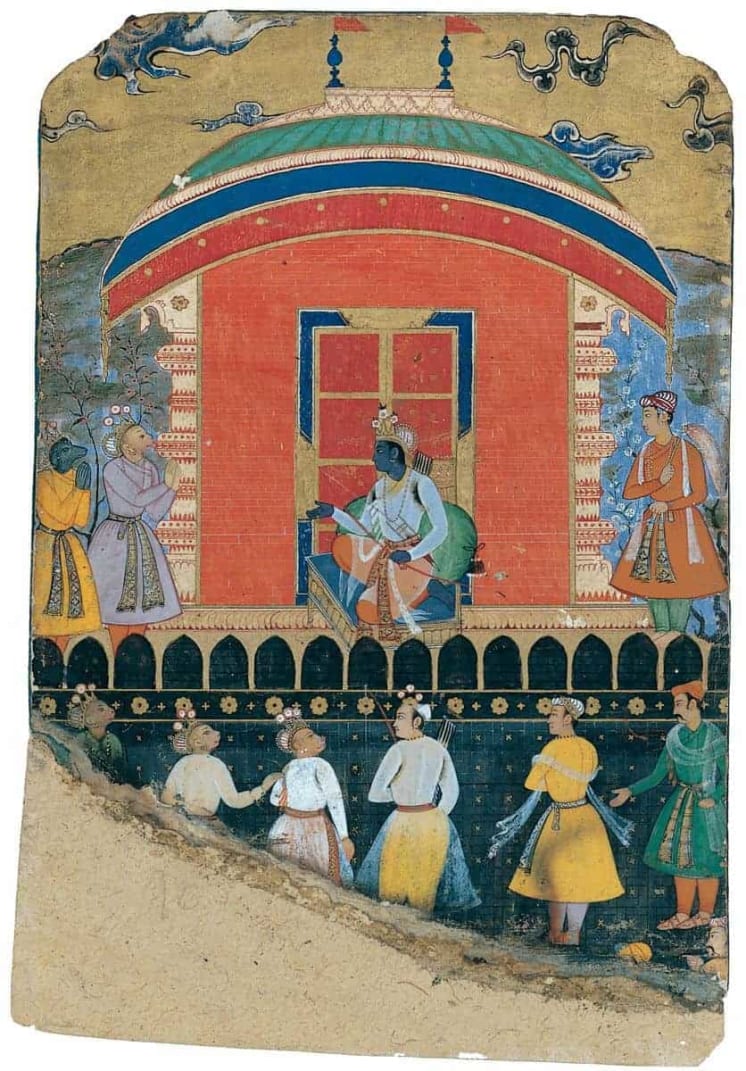
Akbar took religious tolerance a step further and often facilitated discussions among leaders of different religious. Despite speculation that Akbar abjured from Islam due to his tolerance and even appreciation of other religions, he remained a devout Muslim. Some even say that he adapted practices from various religions to create his own unique religion called Din-i Ilahi. But this was more or less a rouse to instill loyalty within his court by creating himself in an image of a god-like character.
Akbar: Advocate for the Arts
More so than any other Mughal leader, Akbar oversaw a mass of Mughal art creation. His reign was one of prosperity, stability and peace, which greatly advanced the production of textiles, manuscripts, architecture, paintings and many others. A number of manuscripts, such as Tutinama or the Tales of the Parrot, were created for the empire’s children and young women to embody proper behaviour and societal standards.
The most famous manuscript to be produced at the time was Akbar’s biography, Akbarnama. Written by Abu al-Fazal and illustrated by Basawan among a few others, this history of Akbar’s reign demonstrated his semi-divine presence as a strong and capable leader. In a number of the images, some of which are now housed in London’s Victoria and Albert Museum, Akbar is always represented as calm in the face of uncertainty. Dressed in saintly white, he appears larger than the rest of the characters and is never seen to retreat from battle or to scare easily from chaos, demonstrating his considerable reputation as ‘Great’.
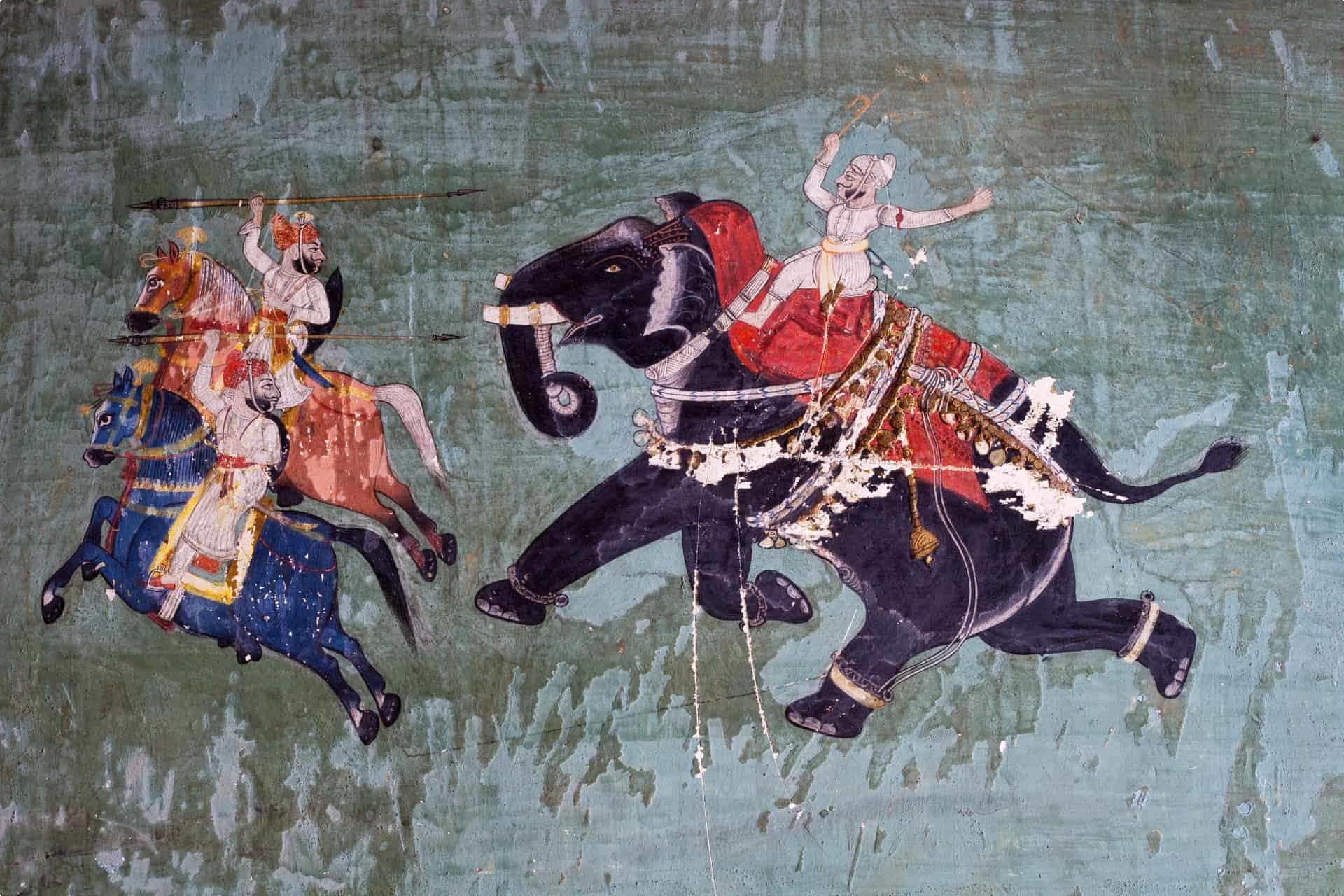 Akbar riding an elephant
Akbar riding an elephant
Northern India is also splattered with architecture from Akbar’s time as he commissioned a number of important buildings to be built. Quintessential to the image of Mughal architecture is the use of red sandstone and white marble in construction. This is perfectly demonstrated by the tomb built for Emperor Humayun completed in 1571 and again with Emperor Akbar’s royal palace of Fatehpur Sikri completed in 1585. Another symbol frequently viewed in both art and architecture are elephants. They held a special place in Akbar’s heart because of their statue and intelligence. According to Catherine Asher, Akbar felt that only intelligent men would be able to control such an animal (2010). Depictions of Akbar riding elephants were frequent and the fact that he was seemingly never injured by them indicated his favour with god.
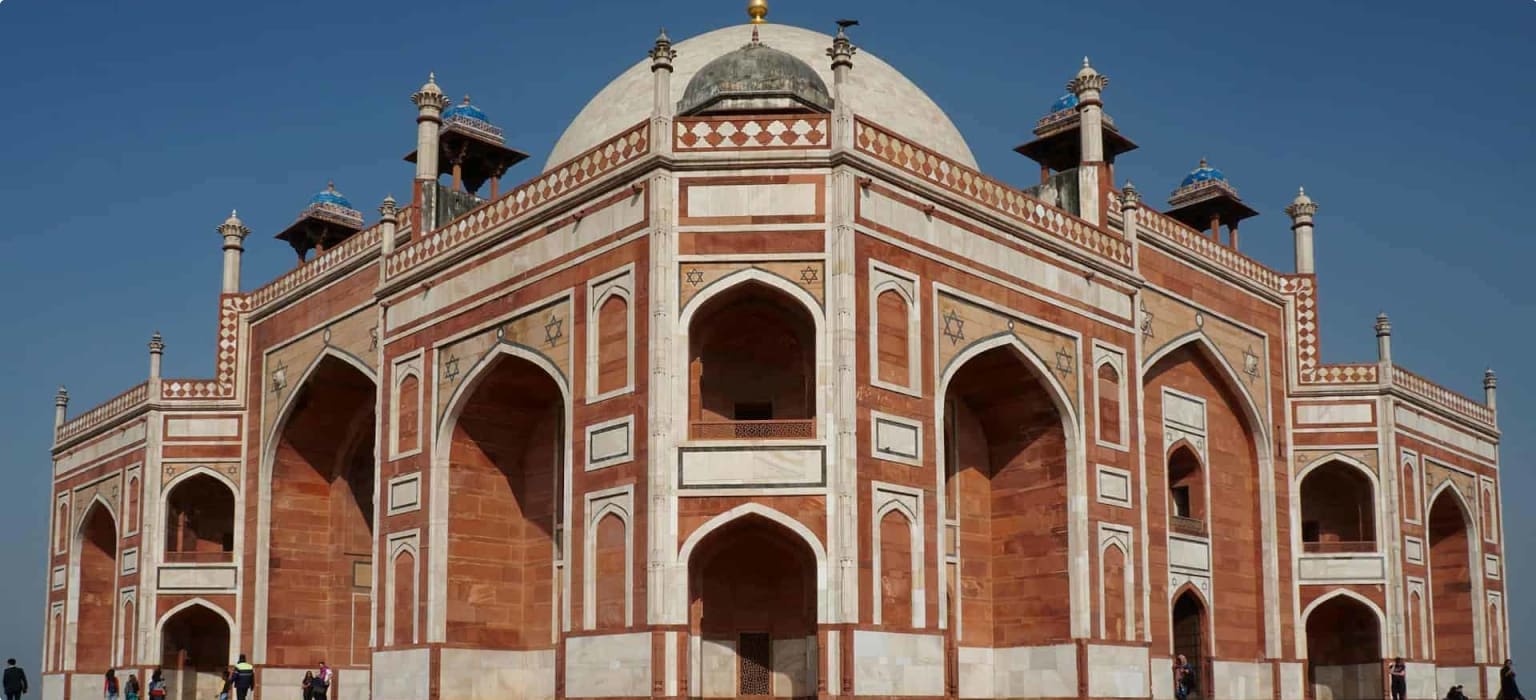
Jahangir the Rebel
Before succeeding to the throne, Prince Salim, later Jahangir, wanted to test the stability of his father’s empire by undertaking the organisation of his own court in the provincial capital of Allahabad. His attempts had little effect in five years, so he returned to Agra and made up with his father, Akbar, on his death bed. When Akbar passed away in 1605, Jahangir forcefully ascended the throne after competition with his four brothers. Even though he abided by the Suhl-i kul policy, he was a much less enlightened leader than his father and significantly shifted the reign of the Mughal Empire. In 1606, Jajhangir ordered the arrest of Sikh guru Arjun, in what was perceived to be an attempt to coerce him into converting to Islam. But was actually an elimination to a threat speaking out for Jahangir’s son to take control of the empire. Nevertheless, in the view of the Sikhs, this was religious persecution, and tensions grew to militerised conflict between the Mughals and Sikhs. Jahangir also detained an outspoken Muslim theologian, Sheikh Ahmad Sirhindi, who advocated for greater observance of the Sharia Muslim laws instead of Suhl-i kul. Eventually this led to the Mughal’s conservative approach to Islam.
Jahangir was renowned for his encouragement of art, particularly painting. Motivated by the desire to upstage his Safavid counterpart, Shah Abbas I, Jahangir commissioned intricate works of art and gifted them along with letters to the Shah. Each painting was better than the last and was more expensive than the return gifts from the Shah. He also ordered the construction of a number of buildings. However, many of them were torn down by his son, Shah Jahan to make way for new buildings in their chosen white-marble aesthetic.
Nur Jahan’s influence
Nur Jahan was one of Jahangir’s later wives and his favourite. Jahangir often confided in his wife and asked her opinion on state affairs. In fact, toward the end of his reign, when Jahangir developed a number of alcohol and drug addictions, Nur Jahan was holding many of the strings, putting her name on state coins and employing her family in high-ranking positions. She developed a taste for power and discouraged Jahangir’s choice of successor, Khurram, because she could foresee her influence being completely erased when he was to rise to power. Despite her best efforts to sway favour toward another of Jahangir’s sons to whom she pushed her daughter to marry, Khurram still managed to defeat all of his brothers to claim the role of Mughal emperor in 1628 . The military competence that Jahangir saw in Khurram, who when emperor was called Shah Jahan, led to a period of prosperity that surpassed that of all previous emperors.

Shah Jahan’s Reign
A deeply religious man, Shah Jahan took a number of significant steps that cemented Islam as a preferred religion over others in his empire. He set about construction of a vast many mosques and refused permissions for Hindu temples to be built. He also oversaw a great exodus of Hindu officials in his administration, welcoming Safavid Persians instead.
Shah Jahan was an avid support of art and architecture, much of which can still be seen today. In addition to having paintings created to record his time as ruler, his most popular exhibition to his patronage of the arts is the Taj Mahal, created as a tomb for his beloved wife, who died in childbirth in 1631. It represents a combination of styles including his ancestor Babur’s walled gardens and then-modern elegant white marble. Additionally, as is tradition for a number of Mughal emperors, Shah Jahan sought the advice of his harem of women to plan the city and its buildings.
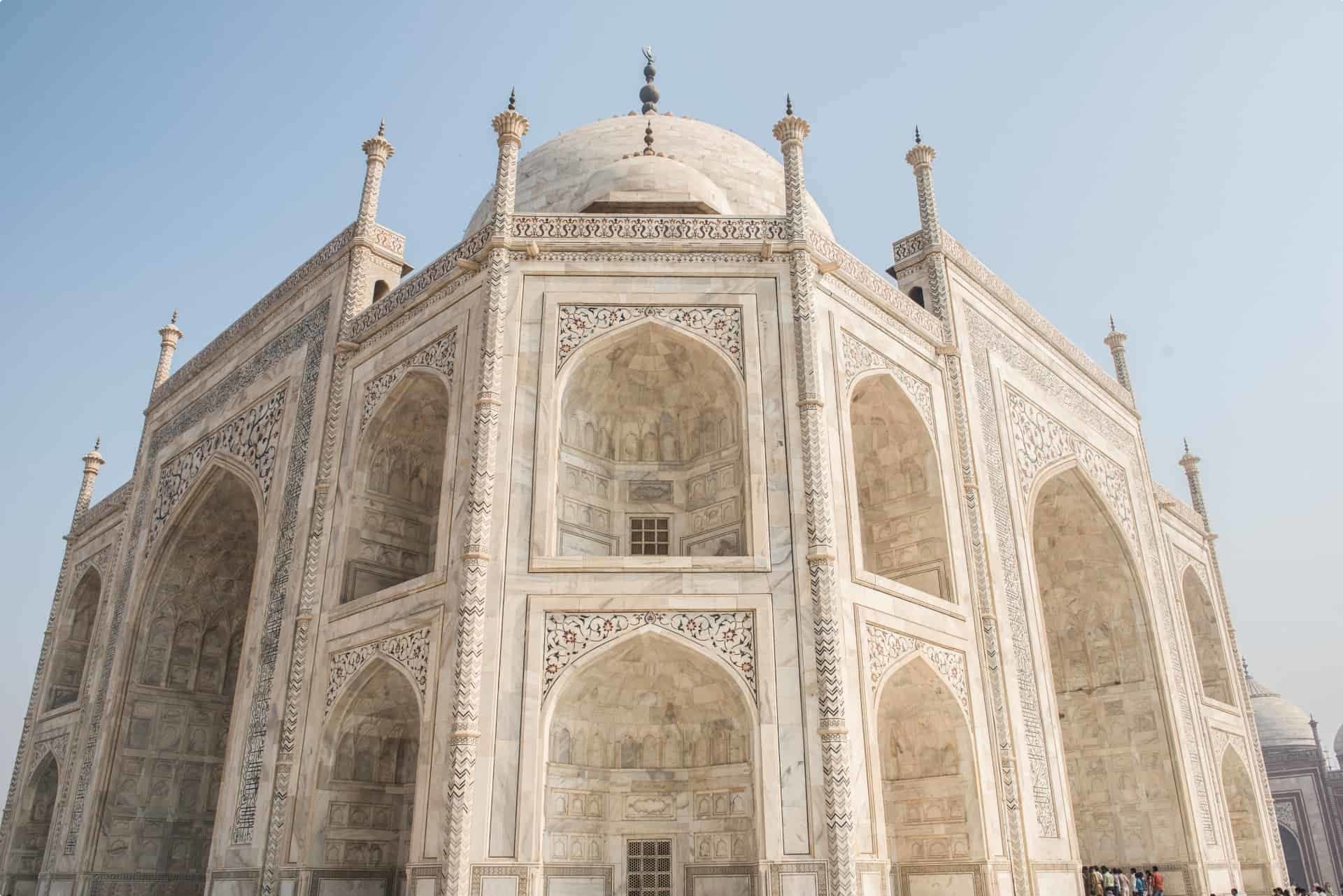
The Sixth Mughal Emperor, Aurangzeb
Aurangzeb’s notable contribution to the empire was a reversal of a number of the tolerant religious policies that his predecessors enacted. As Shah Jahan battled illness, Aurangzeb, his third son, took over the throne. Even when Shah Jahan recovered, he did not relinquish control, but rather confined his father to the Red Fort for eight years. Throughout his tenure, Aurangzeb made no secret that he was a devout Muslim and wanted the rule of the empire to more closely follow the sharia. He reimposed taxes on non-Muslims, tore down Hindu temples and dismissed court artists. He was widely disliked among the people, and caused a great deal more violence through his incessant determination to claim southern India toward Decca. This fractured the empire and caused financial and political turmoil. The empire was susceptible to invasion as many neighbouring and European countries did to take hold of the fertile lands. Officially, the Mughal’s clung to existence for a further 150 years, until the British colonised the area and exiled the remaining Mughal nobility in 1858.
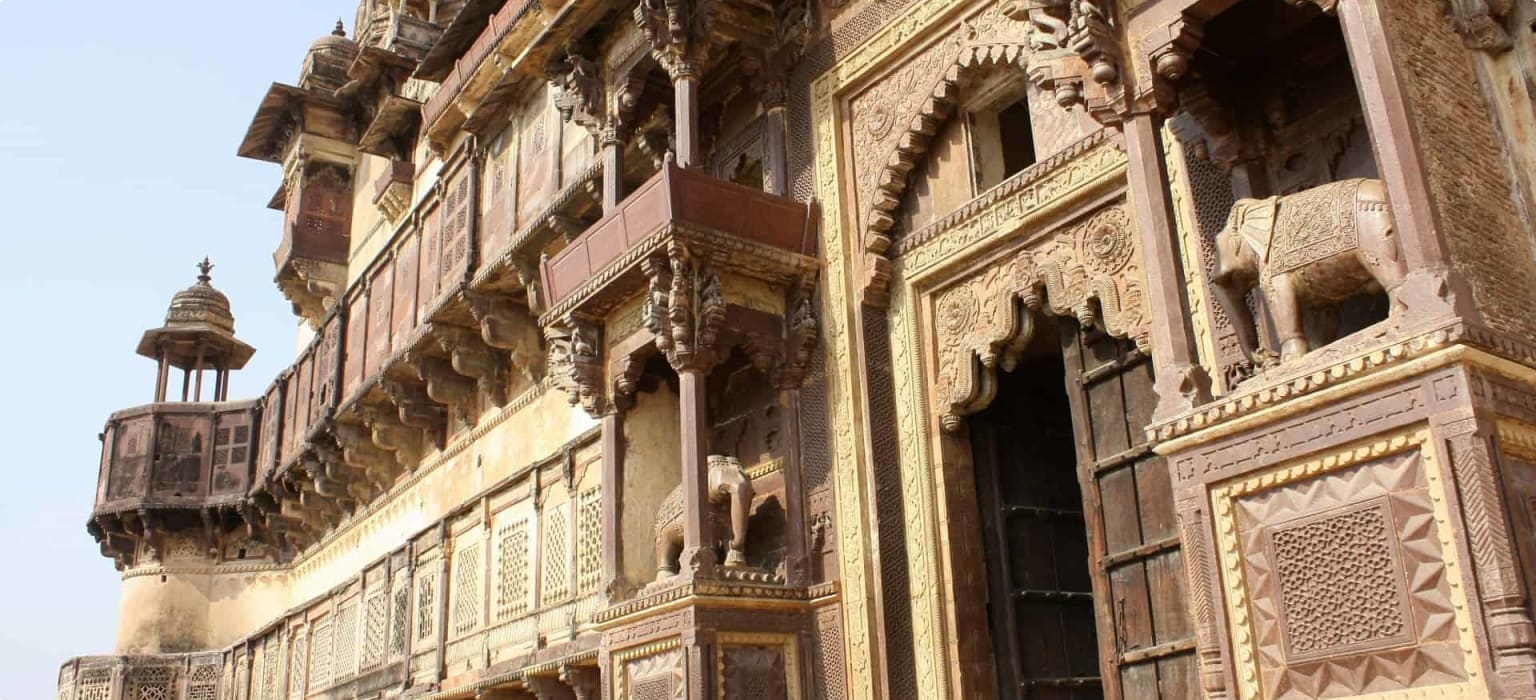
References:
Asher, C. (2010).”India: The Mughals 1526 – 1858″ in J. Masselos ed. The Great Empires of Asia. London: Thames & Hudson Ltd.
About Odyssey Traveller
 Odyssey Traveller is committed to charitable activities that support the environment and cultural development of Australian and New Zealand communities. We specialise in educational small group tours for seniors, typically groups between six to 15 people, and no more than 18 travellers. Odyssey has been offering this style of adventure and educational programs since 1983.
Odyssey Traveller is committed to charitable activities that support the environment and cultural development of Australian and New Zealand communities. We specialise in educational small group tours for seniors, typically groups between six to 15 people, and no more than 18 travellers. Odyssey has been offering this style of adventure and educational programs since 1983.
We are also pleased to announce that since 2012, Odyssey has been awarding $10,000 Equity & Merit Cash Scholarships each year. We award scholarships on the basis of academic performance and demonstrated financial need. We award at least one scholarship per year. We’re supported through our educational travel programs, and your participation helps Odyssey achieve its goals.
For more information on Odyssey Traveller and our educational small group tours, visit our website. Alternatively, please call or send an email. We’d love to hear from you!
Related Tours
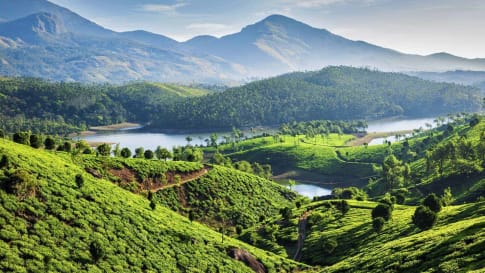
22 days
Nov, MarCultural and History Tour of India | Small Group Tour
Visiting India
Small group tour for mature and senior couples and solo travellers to India. Visiting Delhi and the red fort, Jaipur, Agra and so much more over 22 days explore the world of the Mughal.
From A$12,300 AUD
View Tour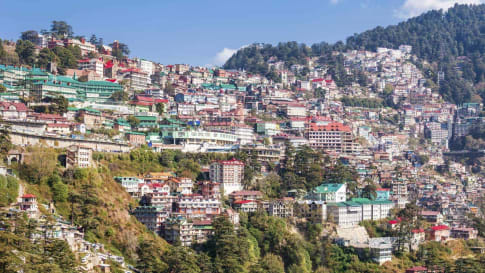
days
OctNorth East India Explorer
Visiting India
An out-of-this-world trip to the Indian countryside.

11 days
Nov, Mar, OctIndia Short Tour | Small group tour for seniors
Visiting India
A short small group tour for Mature and seniors couples and solo travellers of India and its icons. Bounded by the majestic Himalayan ranges in the north and edged by an endless stretch of golden beaches. India is a vivid kaleidoscope of landscapes, magnificent historical sites, such as the Taj or red fort royal cities, such Dehli, Jaipur , Agra and Madras colourful people, and rich culture.
From A$9,250 AUD
View Tour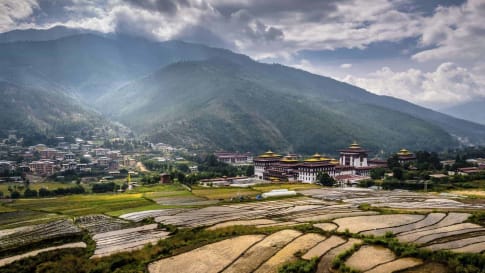
17 days
Sep, AprBhutan | Small Group Cultural Tour
Visiting Bhutan
An unhurried ocean of calm in a crowded continent, Bhutan is scenically magnificent. Join our small group escorted tour and walk up the mountain to the famous Tiger's Nest monastery. The Bhutanese will welcome you to share their distinctive culture, unpolluted environment, and colourful festivals.We explore centuries of Buddhist tradition inherited from Tibet that have shaped this land with art, dance, music, and even medicine shaped by religion.
From A$13,695 AUD
View Tour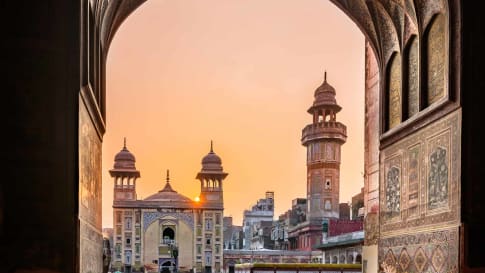
16 days
Mar, OctTour of Pakistan
Visiting Pakistan
This 16-day small group tour for couples and solo travellers explores the long history and colourful culture of Pakistan, and begins in Karachi, Pakistan's largest city, and ends in its vibrant capital, Islamabad, includes Lahore fort and Skardu valley.
From A$10,500 AUD
View Tour